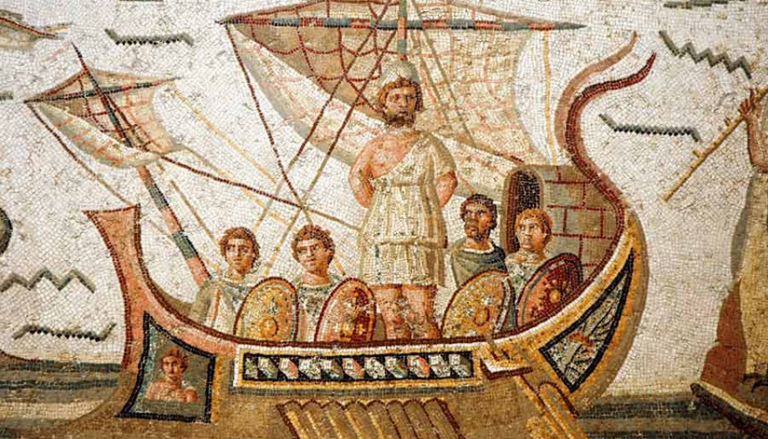The Odyssey’s main sequence (except for Odysseus’ travels) takes place in the Peloponnese and what is now known as the Ionian Islands (Ithaca and its neighbors). What’s more, incidental allusions to Troy and its house, Phoenicia, Egypt, and Crete suggest that the Iliad’s geographical knowledge is comparable to, if not somewhat superior to, the Odyssey’s.
However, ancient and modern academics disagree on whether any of Odysseus’s stops along the way (after Ismaros and before his return to Ithaca) were real. The geographer Strabo, like many others, was skeptical. He reported what the renowned geographer Eratosthenes had said in the late 3rd century BC: “When you discover the cobbler who sewed up the bag of winds, you will find the site of Odysseus’ wanderings.” But was he right?
The Geographical Location of Odysseus’ Story
The topography of the Apologoi and the location of the Phaeacians’ island of Scheria provide very different challenges than locating Troy, Mycenae, Pylos, and Ithaca. The names of the places and peoples that Odysseus travels to or claims to have visited are not documented in any ancient source other than the Odyssey, either as historical or contemporary information. According to Odysseus’ story, what happens to him in these places falls into the realm of the supernatural or fantastic, although to an extent that is not true of the remainder of the Odyssey.
The first tattoo artist in Greece dies at 89
It is debatable if Odysseus’ story is meant to be considered as factual within the Odyssey’s overall storyline. We don’t know whether the poet imagined the locations on Odysseus’ journey, as well as the routes between them, as actual. Even if the locations were imagined to be actual, the impacts of coastal erosion , silting, and other geological changes over thousands of years can drastically alter the terrain and seascape, making identification difficult.
Read more: Ancient Origins
Ask me anything
Explore related questions





